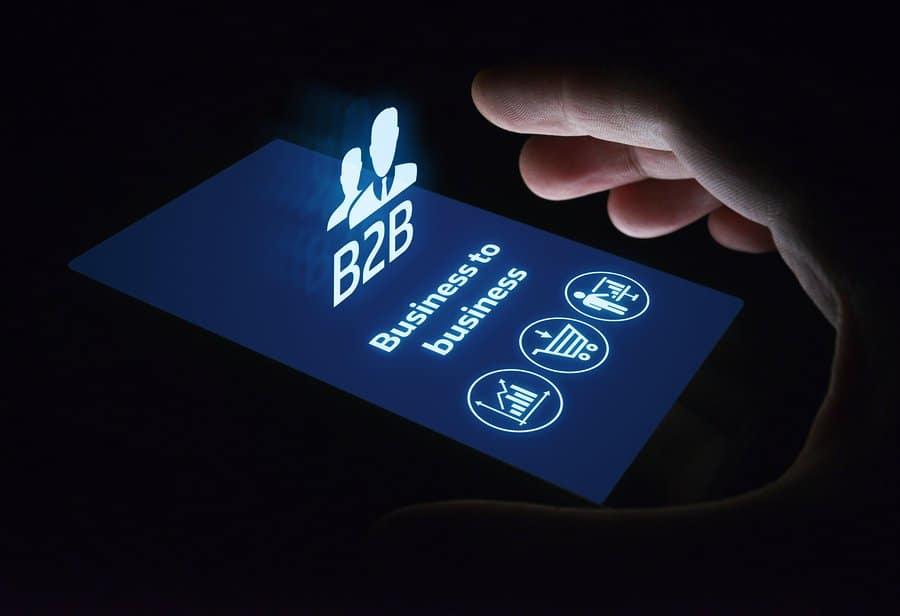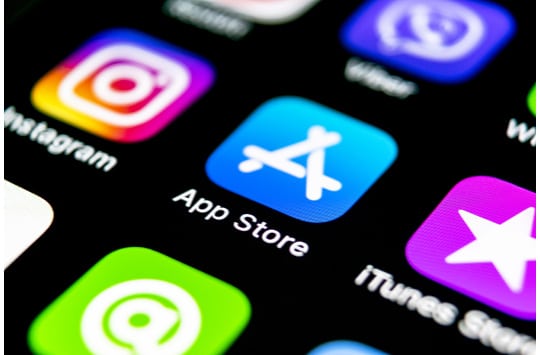Source: Bigstock

In a recent column, I took a look at the numbers behind conversion marketing, from a general, consumer perspective. However, that does an injustice to business-to-business marketers, because the B2B side includes a number of effective tactics that are specific to the business world. In fact, business-to-business marketers are prioritizing conversions over other metrics to measure success. Of 316 B2B marketing pros polled in 2016, 44% prioritized turning leads into sales:

(Source: Kapost’s 2016 B2B Customer Experience Benchmark Report, page 26, via Statista)
But what are these B2B-specific tactics? They all focus around a central generalization: Subscription businesses can thrive quite nicely, thank you, with a relatively small customer base. Take my own example. I once ran a small division of a larger company, employing about 15 people, selling business information to a relatively few clients. We had about 100 clients; some were relatively unknown, some were big name brands. Selling a vital subscription service to the few companies who really need that service, and who are willing to pay for it, is a relatively common B2B business model. And for this model to succeed, it is not your Instagram feed, nor your 100,000 target email blast, nor your Google Adwords campaign that makes the difference. It is a genuine name, the outreach to a real person, the meeting on location or at a trade show, that makes the difference.
So don’t overlook the importance of the personal touch in B2B marketing. Consider this data on converting leads to closed deals:

(Source: implisit.com 2014 B2B Sales Benchmarks, via Statista)
Now, this data is from 2014, so take these numbers with a grain of salt, especially the social media figures. The value of this older data, however, is the story it tells about the business of successful B2B conversion marketing. The most effective tactic is customer and employee referrals – more than twice as effective as the next tactic. This speaks volumes to the power of the individual interaction. Personal outreach – not possible in B2C marketing due to the sheer number of consumers out there – makes a huge difference in the close-knit business communities typical of particular industry segments.
The next few tactics above – website, social media, paid search, etc. – confirm the obvious, that business buyers are looking online to research products and services. There’s a lot of advice out there, applicable to both B2B and B2C marketers, on using these web-based tactics to generate and convert leads. All of that is vitally important, but in this column I’m not spending time on it, choosing instead to focus on the tactics that are specific to B2B marketing. (For an intelligent take on B2B marketing using exclusively online methods, check out Aden Andrus’s piece for Disruptive Advertising from last year.)
In that vein, take a look at the trade show entry above. Here too, the face-to-face importance of human contact pays dividends.
But while we are on the topic of actual conversion rates, pause for a moment and consider what the numbers actually mean. A high conversion rate sees a higher percent of leads converted to sales; a lower rate sees a lower percent of conversions. So focus on the method that has the highest rate, right?
Wrong.
Your sales force might be able to go out and meet face to face with 100 leads in a month. At a 3% conversion rate, that’s three conversions – three sales. Your email marketing hits 10,000 qualified leads in the same month, with a .01% conversion rate. That’s 100 sales. Which tactic is better? The answer, of course, is that it depends, and that a marketer needs to balance ROI across a range of tactics. Let’s dig deeper into the ones that are especially effective for B2B conversions.
I like Neil Patel’s take on what makes a good conversion rate. Writing at The Daily Egg, he says:
- What is a good conversion rate? One that’s better than the rate at which you’re converting prospects today. It’s that simple.
An important point of differentiation between business-to-business and business-to-consumer marketing is the primacy of event marketing for B2B outreach. Consider the smaller size of the B2B target base and the ability of trade events to concentrate that base in a specific location; it becomes a viable strategy to generate leads and contact customers in a face-to-face setting. Elise Schoening at the Demand Gen Report summarizes this value:
- As digital channels grow more crowded, B2B marketers are pouring more of their marketing dollars into events, where they hope to meet with new buyers face-to-face and strengthen current relationships with key accounts. According to research from Bizzabo, 41% of marketers say live events are the most critical channel for achieving business outcomes and 50% say they spend at least 21% of their budget on events.
In a 2017 poll of B2B marketing experts, event marketing was deemed to be just as important as content marketing:

(Source: Kapost’s 2017 B2B Content Strategy & Operations Benchmark, page 8)
Take a look at trade show conversions from a different angle:

(Source: Exhibitor 2015 Sales Lead Survey, via Statista)
This data is also a bit old, and I’m not worried about the actual numbers anyway -what’s a lead? A business card in a fishbowl, a scanned badge, a sit-down meeting? The key for me here is that fully half of B2B trade show exhibitors polled just had no idea! Maybe they feel there is value without quantification. Maybe they are at the event for marketing and branding as much as for making sales. They just value being able to shake hands. Well, I’m a data guy, so I’ll concede the point but still argue that it is better to measure and define your successes.
One way to do that nowadays is with lead retrieval apps. Writing for Trade Show News Network this month, Robert Edwards details the impact of measurable metrics on trade show efficiency. For example:
- Using lead retrieval software, event marketers and exhibitors can capture data, qualify prospects, distribute leads among sales representatives and even measure lead-to-sale conversions, sale closure rates and other valuable return on investment metrics such as dollar value of sale and number of products sold.
The key in measuring conversions is not the raw number, but the value derived for effort expended. Consider some more recent data – not on conversion rates per se, but on effectiveness:

(Source: MarketingCharts.com, 2018)
In the text accompanying this graphic at MarketingCharts, the value of B2B-specific marketing tactics is made clear:
- Of the tactics identified in the report, the largest share of respondents cited events (68%) as generating qualified leads for the top of the funnel. This is again backed up by separate research that has demonstrated a preference for live events as a lead-generating tactic. Close behind, B2B marketers are also finding success in generating qualified leads through webinars (61%).
Both live events (conferences and trade shows) and webinars are effective B2B tactics for lead gen and for conversion marketing, though this research suggests that using these for lead generation has a slight edge for these.
Webinars take the old-school face-to-face model and bring it into the 21st century. Ling Wong at Apruve puts a name to this new mode of personal-via-Internet communication … “Conversational Selling.” She details the best way to use this tactic:
- In the good old days, selling was a one-to-one interaction — merchants talk to prospects, understand what they want, and offer a solution. … With the widespread use of technologies such as live chat and messaging apps (e.g., Facebook Messenger, WhatsApp,) businesses can apply conversational selling strategies at scale without spending an arm and a leg on hiring a large sales team. With conversational selling, you can attract visitors to your website, convert them to leads, follow up on previous interactions, nurture relationships with targeted content, connect prospects with your sales team when the time is right, and improve customer retention by adding value or providing timely product support. The key to successful conversational selling is to make sure that the interactions are relevant and contextual by providing your prospects and customers with the most helpful information in real time.
A personalized approach to customers with helpful info in real time … good advice for every interaction with a potential subscriber, regardless of mode of contact!
Insider Take
Landing big accounts, forging long-term relationships, and establishing personal connections are key components for B2B subscription business success, and a good B2B marketing plan achieves those with a focus on the human touch.








